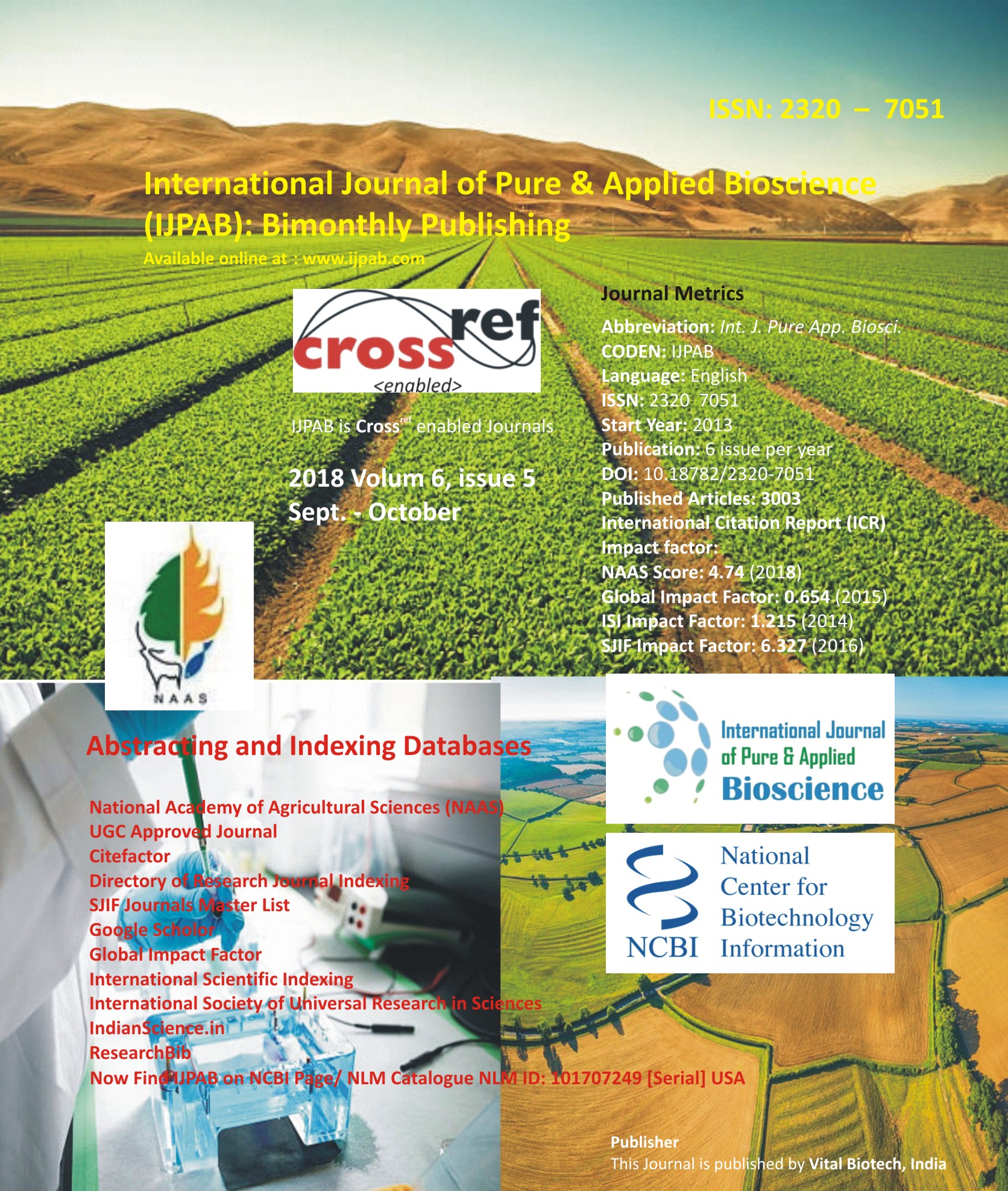
-
No. 772, Basant Vihar, Kota
Rajasthan-324009 India
-
Call Us On
+91 9784677044
-
Mail Us @
editor@ijpab.com
International Journal of Pure & Applied Bioscience (IJPAB)
Year : 2018, Volume : 6, Issue : 5
First page : (1264) Last page : (1275)
Article doi: : http://dx.doi.org/10.18782/2320-6791
Aboveground Plant Communication by Air Borne Signalling
Vanishri B. R.1* and Mamata Khandappagol2
1 PhD Scholar, Department of Plant Biotechnology
2 PhD Scholar, Department of Genetics and Plant Breeding
UAS, GKVK, Bangalore 560065, Karnataka, India
*Corresponding Author E-mail: vanishribr41@gmail.com
Received: 12.08.2018 | Revised: 23.09.2018 | Accepted: 29.09.2018
ABSTRACT
Plants are sessile but highly sensitive organisms, they are actively communicating among themselves for environmental stimuli/stresses both above and below the ground. As plants do not have organs that function as ears or mouths the idea that they can hear what might be spoken to them or speak to each other is by different ways of communication. Plants emit volatile organic compounds (VOCs) as a means of aboveground communication, they warn other plants of impending danger. Nearby plants exposed to the induced VOCs prepare their own defence weapons in response. Plants use Common Mycorrhizal Network (CMN) as a communicating media belowground; they use Common Mycorrhizal Network for sharing the nutrients and defence signals. In this review we are emphasising only on aboveground plant communication.
Key words: Volatile organic compounds (VOCs), Plant communication, Defence.
Full Text : PDF; Journal doi : http://dx.doi.org/10.18782
Cite this article: Vanishri, B. R. and Khandappagol, M., Aboveground Plant Communication by Air Borne Signalling, Int. J. Pure App. Biosci.6(5): 1264-1275 (2018). doi: http://dx.doi.org/10.18782/2320-7051.6791

